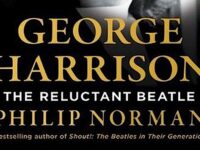In addition to the talents of George Harrison, John Lennon, Paul McCartney and Ringo Starr, many others played a role in the Beatles’ success. Names such as Brian Epstein, George Martin, and Derek Taylor immediately leap to mind, but what about Charlie Roberts, Ian James, and Geoff Nugent?
The lesser-known friends, family and musicians who influenced the Beatles finally receive their due in David Bedford’s Fab One Hundred and Four: The Evolution of the Beatles from the Quarrymen to the Fab Four 1956-1962. A Liverpool native and author of Liddypool (an exhaustive history of the city), Bedford provides complete histories of figures who played large or small parts in Beatles history, many relatively obscure until now.
Through photographs and, where appropriate, interviews, Bedford describes how each person — 104 in total — influenced the group during their formative years. James, a classmate of McCartney’s at the Liverpool Institute, taught Paul McCartney how to play “Twenty Flight Rock” — a significant contribution, as McCartney’s performance of that song earned him admission into the Quarrymen. Until 2006, Ian James also owned a very special instrument: the first guitar Paul McCartney likely ever played.
Geoff Nugent befriended neighbor George Harrison when they were both 13, learning how to play songs such as “Raunchy” (the song that Harrison played during his Quarrymen audition) and sometimes performing on street corners. Others provided significant documentation of the Beatles’ early years, such as Charlie Roberts, who took some of the earliest photos of the Quarrymen. He charmingly recalls John Lennon and his friends as “good fun.”
Ever wonder what happened to Janice the Stripper, who asked for a live band (the Sliver Beatles, then also including Stu Sutcliffe) to back her act for a week in 1960? She’s present and accounted for in David Bedford’s Fab One Hundred and Four.
In addition to profiles of each person, Bedford also reveals the stories behind such significant Beatles places as Quarry Bank High School, the Liverpool Institute High School for Boys, and the Liverpool Art College. A particularly fascinating aspect of Fab One Hundred and Four is its discussion of how American R&B music reached Liverpool, dispelling many preconceptions as to how those records caught the attention of budding rock and roll musicians.
Another lesser-known fact is the influence of local African-American musicians on the Beatles, particularly artists such as the Royal Caribbean Steel Band and Vinnie Ismael, a Somali-Irish rhythm guitarist who led the group Vince and His Volcanoes. Ismael’s former manger recalls that Ismael once taught Lennon and McCartney how to play a Chuck Berry chord in 1961.
Largely avoiding the often-told stories in other Beatles books, David Bedford allows readers a glimpse into a less documented part of the group’s history. Numerous photographs, many extremely rare, accompany each story. Few books have traced the group’s long and winding history as throughly as Fab One Hundred and Four: The Evolution of the Beatles from the Quarrymen to the Fab Four 1956-1962, and its exploration of R&B’s important influence on British rock and roll fills a huge knowledge gap.
Hardcore Beatles fans and researchers as all as enthusiasts of the 1960s British Invasion will deem Fab One Hundred and Four a crucial addition to their bookshelves.
- The Rescued Early Paul McCartney Song That Completed ‘Beatles For Sale’ - December 4, 2024
- A Rare Beatles Cover Proves John Lennon Was Wrong About His Voice - November 26, 2024
- How John Lennon Came Roaring Back on the Beatles’ White Album - November 22, 2023



intrigingly described review!